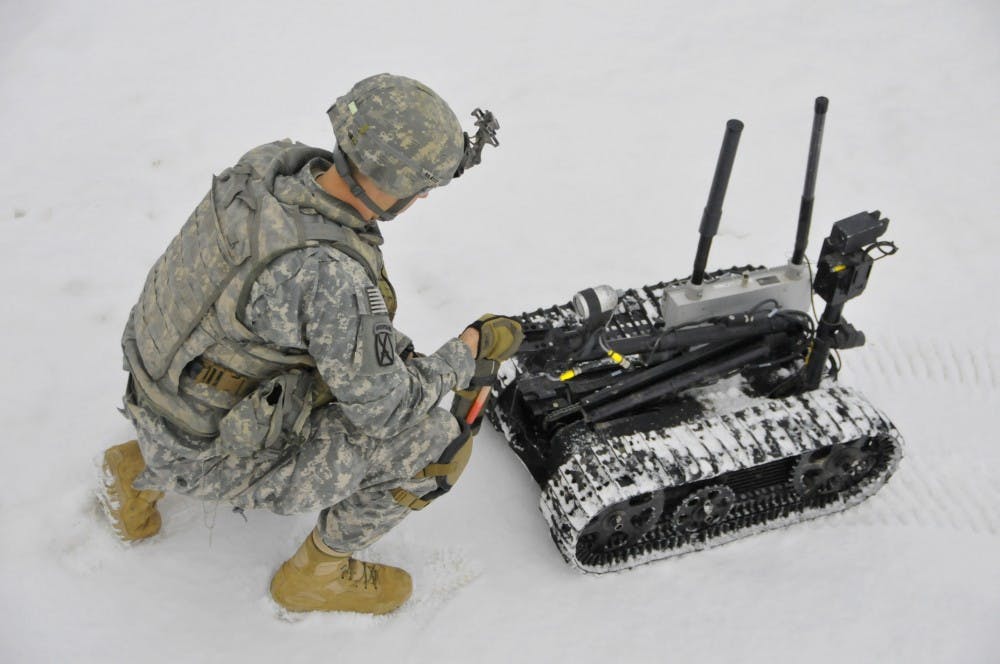
Penn researchers just received a five-year, $27 million government grant to develop a team of autonomous, specialized and resilient robots for the United States military.
One of the researchers, Electrical and Systems Engineering Chair George Pappas, said what distinguishes this research from other similar projects is its focus on specialized teams of robots, rather than individual ones. These robots will also be able to learn from each another in unknown environments.
“Imagine you have agents like in soccer when some are stronger, some are taller, some are faster. How do you figure out what’s your unique role given your unique capabilities?” Pappas said. "I think that’s sort of the unexplored territory as to how do we get robots to learn to collaborate.”
The School of Engineering and Applied Science received the grant from a United States Army Research Laboratory program that aims to advance robotic technology. The Engineering School, which is leading this project, will collaborate with the Army Research Laboratory and researchers at five other universities.
Electrical and Systems Engineering professor Alejandro Ribeiro explained that ten robots with the same capabilities can only do tasks at ten times the speed or scale of a single robot. But if each robot has its unique skill, robot teams can do tasks that each individual can’t do on its own.
“Heterogeneity really is what makes the group more than the sum of its parts,” Ribeiro said.
According to the researchers, in order to make robots collaborative, the group need not only to create an autonomous network for robots to communicate, but also to ensure that the robots are resilient. Pappas explained that, for example, two robots that have never interacted should be able to collaborate and continue to perform tasks as a team, even if some fail or are cyber-attacked.
Computer and Information Science professor Camillo Taylor added that robots should be able to make good decisions in the presence of uncertainty. This might mean knowing where to move even “as different parts of the network move around,” he added.
Taylor added that this research can be applied to situations outside of the military, such as when natural disasters strike and damage city infrastructure. Drones and aerial or ground-based robots could “automatically deploy themselves to form a communication network” either to collaborate on a common task or to work individually.
Pappas said that projects with teams of specialized robots “can really shape a national direction for robotics research.”
“This is a project that could define the future of distributed intelligence and heterogeneous robots and resilient robots not just for Penn or the partners in the project, but actually for the nation,” he said.
The Daily Pennsylvanian is an independent, student-run newspaper. Please consider making a donation to support the coverage that shapes the University. Your generosity ensures a future of strong journalism at Penn.
Donate



